What if you could hear everything said in a far-off room that is also sealed behind sound-proof glass by merely recording a video of some small object over there, even if it were just the leaves of a potted plant? That is how advanced audio and video processing hardware have come to be. Researchers from MIT, Microsoft and Adobe have been able to recover intelligible speech from vibrations of an object by using a high-speed camera, whose video chips can process up to 6000 frames per second (fps). Of course, industry-leading devices can do up to 100,000fps. Compare that to a humble camera that can barely keep up with 60fps and you can get the picture (pun intended!) of how audio and video processing solutions have advanced over the ages.
Moore’s law is taking everyone along
It was not that far back when Moore’s law citations were limited to Intel processor launches. The one lasting trend in electronics is integration, and its increasing levels bring in different functionalities into the chip. What used to be discrete components that were soldered all over a PCB around five years back are now coming within a single piece of silicon.
If you get a pair of high-end headphones of the brand Beats by Dr Dre and open these up, there is just one chip inside. This one chip takes care of the entire sound quality and the experience that you have when you listen to music. It is a very strong audio platform that also streams Bluetooth from your iPod or your phone.
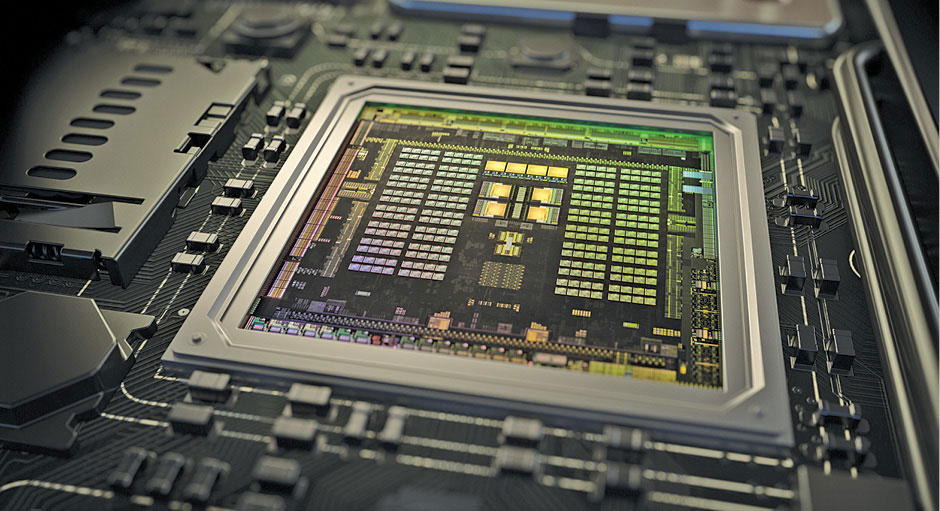
“What we see now is a single chip, a piece of silicon that has audio codec (coder-decoder), memory, processor and power management, all rolled into one. This is like a complete voice and music platform. This is a market that goes into headsets, sound bars and speaker docks, and the next big opportunity is to have the same system but stream it into the entire house using a combination of Bluetooth and Wi-Fi,” explained Joep A.J. van Beurden, chief executive officer of CSR PLC, in an interview with EFY.
Chips that provide many-in-one functionalities such as dual microphones, single-chip mono-headset solutions with advanced echo and bi-directional noise-cancellation technology are targeted for low-cost two-microphone mono-headset applications provided by CSR’s CSR8620.
Broadcom BCM2047 is an older monolithic 0.13μm, single-chip Bluetooth 2.1+ EDR wireless audio solution with integrated DSP. It offers what the company claims to be the highest level of functional integration to deliver a cost-optimised bill of materials (BOM) via a flexible platform for headset development.
Let us shoot the video first
PC gaming and mobile devices. A graphic display often plays an important role when buying a smartphone or a gaming PC. A serious gamer knows some of the most complex lighting and graphic challenges in visual computing. These days, lifelike graphics is the most demanding feature for games and apps. There are many companies in the segment that are offering powerful and faster processors to meet consumer demands. Recently, a processor was launched with features like real-time processing performance with extended connectivity and intuitive user interface (UI), and it could perform tasks such as instantly downloading and running apps. For example, Tegra x1 processor from NVIDIA caters the requirement for PC gaming and mobile devices.
Servers. In servers, a new graphic processing unit (GPU) built for high-performance computing has been launched. The server GPU is supported by a powerful software ecosystem, helping developers to better harness its compute performance including support for OpenCL 2.0. The device also provides support to handle workloads in a variety of sectors by enabling OpenMP, an API for high-level parallelism in C, C++ and FORTRAN languages. An example would be AMD FirePro S9150, which offers these solutions for the servers.
Digital signages. A set back box (SBB) is largely used by digital media players. SBB is basically a consumer device, or box, which enables the user to access both linear broadcast and Internet based content, with a range of other services like an electronic programme guide (EPG), pay per view (PPV) and video on-demand (VOD), enabling the user to view over large-screen sets.
The arrival of the new accelerated processing units (APUs) will turn the conventional digital signage displays into a wide range of business needs. These APUs will help media players to deliver breakthrough graphics performance and support multi-video streaming up to two displays, all being achieved in a power-efficient and ultra-power-compact form factor. For instance, embedded RX425BB APU from AMD is offering a solution in the digital signage medium.
Low-power chipsets. Low-power chipset is the next big trendsetter for the power-hungry video and audio analytics. A new DSP has been launched that delivers up to 200MHz performance, enabling faster processing of data with low power consumption for demanding applications, such as audio and video, biometrics and other analytic-specific applications. These applications are opening up a world of possibilities that add capabilities such as face detection, object tracking and voice recognition to a new generation of smart products. These low-power chipsets offer a combination of low standby and low active power, making these the best choice for battery-powered analytic portable systems. Products like Texas Instruments (TI) TMS320C5517 chipset are offering solutions in this domain.
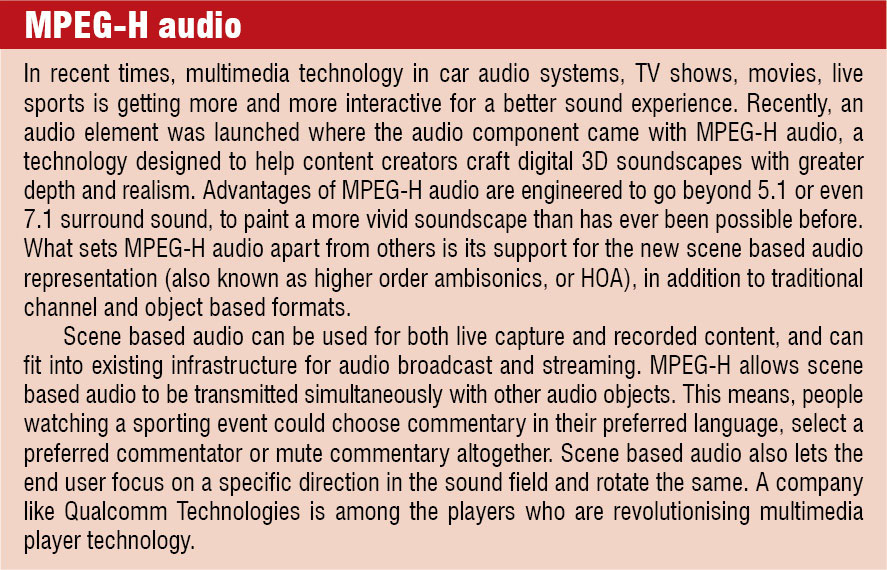
Digital cockpits. Head-up displays (HUDs) and advanced driver assistance systems (ADASs) are going to be the next game changers in the automotive industry. On an HUD, you can project information on the windshield and inform the driver where to turn, notify lane markings and notify how close the car is actually to the car in front, while features like traffic-sign recognition, blind-spot detection, driver-alertness monitoring and night vision will be defined under ADAS.
Chipsets have been launched recently serving the need of this specific application, which combine the capabilities of projecting information on a surface providing automotive-scale reliability and a wide field-of-view. Examples of such chips are TI’s DLP3000-Q1, DRA75x Jacinto 6 Ep and Jacinto 6 Ex processors.
TFT LCDs. With the emerging demand and application of HUDs, new and advanced TFT LCDs have been recently launched in the market to meet the requirements of the automobile industry. These TFTs are capable of displaying HUD applications and driver information. Some companies like Kyocera Industrial Ceramic have introduced new advanced TFT LCDs to meet the needs of the automobile market.
Ultra-4k chipsets. The fast-growing segment in the consumer electronic space is HD viewing. Viewing has now become four times better than its predecessors, through what is known as ultra high definition (UHD), or 4K. Features like active pull-ups on all display data channel (DDC) lines to maintain UHD signal integrity minimise dependence on HDMI cables for better screening experience.
On the other hand, increased bandwidth of 10GHz to pass through 4K signals without distortion, low-clamping voltage of 10V and fast response time increases performance. For instance, STMicroelectronics is one of those companies that have launched single-chip HDMI (HDMI2C1-14HD, HDMI2C1-14HDS, HDMI2C2-14HD and HDMI2C1-6C1) designed for maximum performance.
Colour sensors. Conventional colour sensors required a transparent optical window in order to accurately detect visible (that is, RGB) light. However, the design trend in many smartphones and portable devices is to adopt dark optical windows for a smart outlook, making it difficult to detect colour. Since less visible light gets through, the light that permeates gets further mixed in with infrared (IR) rays. But the launch of new brightness colour sensor optimised for smartphones leverages the original IR-removal technology. IR cut-off characteristics like reducing the effects of IR rays by over 10x as compared with conventional products enables compatibility with dark (low-permeability) optical windows. Colour sensors for display-equipped devices such as smartphones and tablets are capable of detecting colour temperature, brightness and RGB components of ambient light. A product like ROHM’s BH1745NUC sensor is one among the newer launches.
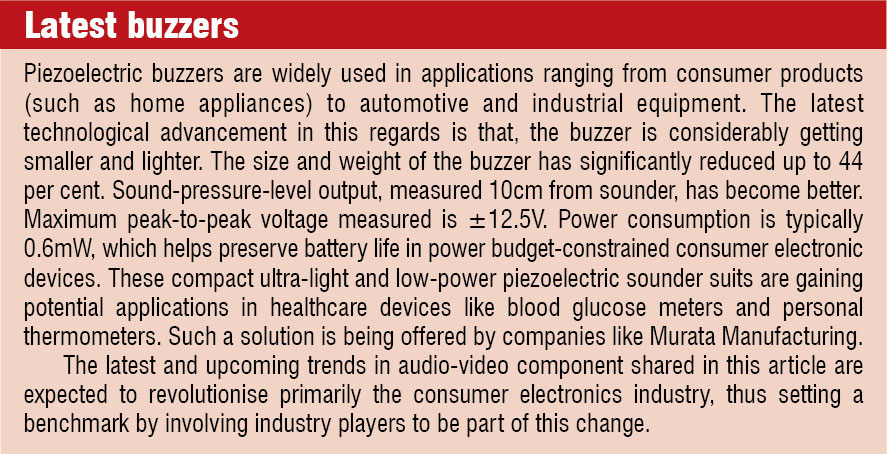
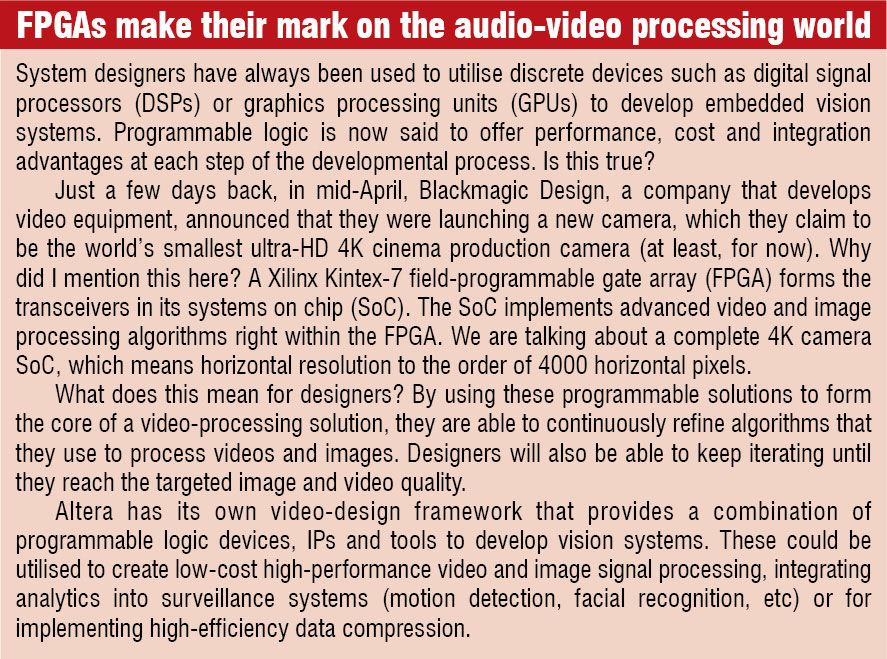
What is happening in audio
All-in-one chips. E-Call, instrument cluster, telematics and in-car listening experience are expected to get better with the launch of full-digital class D amplifiers. The full-digital amplifier architecture featured with built-in low-radiation function, floating digital core, anti-cross conduction and slope control minimises tuner interference, enhances mobile phone immunity and simplifies compliance with all other emission standards, enabling high audio performance by using low-cost external components. These amplifiers connect noiselessly to the digital audio processor without a digital-to-analogue converter (DAC) or input filter. Companies like TI (TAS5421-Q1) and STMicroelectronics (FDA2100LV) are contributing their solutions in this sphere.
Better microphones. Often in loud and noisy environment it becomes difficult to hear the voice of the person on a mobile phone. Due to noise and other disturbances, communication is not proper. Now, with the launch of advanced MEMS microphones, one can hear better on mobile devices.
MEMS microphones maintain ultra-low distortion at less than 10 per cent up to very-high external sound-pressure levels, enabling equipment such as smartphones and wearable devices to perform better when placing calls or recording audio in loud environments. In MEMS technology, the preamplifier design is the key, as this prevents saturation of the output signal even when background-noise levels are high, such as at concerts, bars or clubs, or if the user is speaking loudly close to the microphone.
In addition, omni-directional sensitivity ensures excellent overall performance and versatility in mobile applications. STMicroelectronics MP23AB02B is one such high-quality microphone.
Enhanced headphones. In advanced headphones, a new chipset has been launched that draws low power and high-quality codec for portable and general-purpose audio applications. Traditionally, to 24-bit stereo ADCs and DACs, this new device integrates a broad range of additional functions to simplify implementation of complete audio system solutions. The device reduces external component requirement by integrating drivers for speakers, headphones and differential or stereo-line outputs, and integrates preamps for stereo differential microphones. Its application gets extended to personal media players, smartphones, personal navigation devices, stereo Bluetooth headsets and more.
Advanced headphone solutions are offered by companies like Analog Digital (ADAU1373) and Nuvoton (NAU8822).
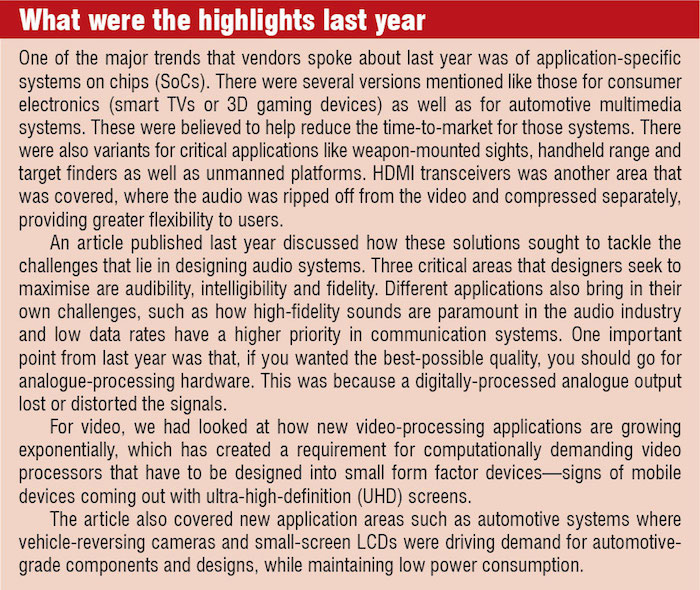
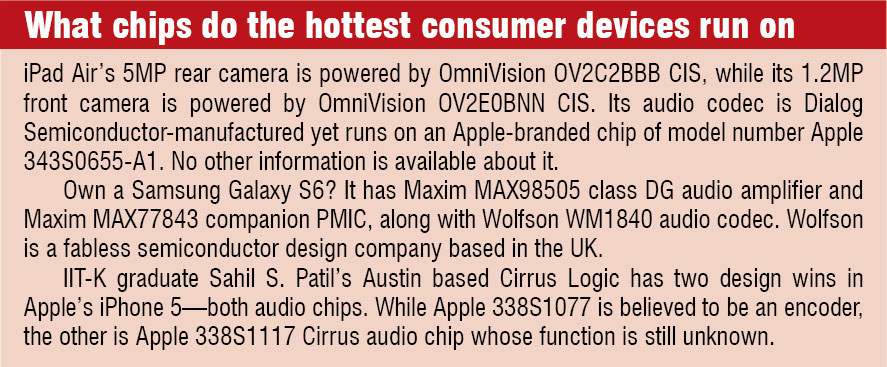
The IoT rears its head
With the Internet of Things (IoT) penetrating almost every aspect of electronic design, whether in the name of the IoT or cyber physical systems, traditional manufacturers seem to be getting the proverbial short end of the stick. “Traditional audio/video device manufacturers, who are experts in their fields, may have difficulty mastering incorporating wireless connectivity and IoT elements in their end products,” says Esmond Wong, vice president – business development and supplier marketing, Arrow Electronics.
So, how are vendors tackling this? Advanced Wi-Fi and streaming solutions deliver CD-quality music to anywhere in the premise without the need of connecting wires. Such technologies reproduce the fullness, clarity and depth of music way beyond Bluetooth A2DP.
In addition to longer ranges; higher bandwidth and stronger immunity to interferences, Wi-Fi technologies coupled with UPnP/DLNA, industry standards for music discovery and sharing enable speakers to stream music from libraries that are typically spreaded across all compatible devices in the local network, such as PCs, tablets, smartphones and network storage devices.
For instance, you have TI’s CC3200 board, which is a microcontroller unit that comes Wi-Fi-certified out of the box. TI has made available audio-booster chips for this board that contain a class D power amplifier to drive the speakers and an ultra-low-power audio codec, TLV320AIC3254, which supports programmable audio processing.
Microchip Technology recently announced, at Hong Kong Electronics Fair, the release of its second-generation Multizone audio technology and a mobile app for use in whole-home-audio and multi-room applications. JB Multizone 2.0 utilises advanced technology to reduce audio drops found in traditional Wi-Fi-streaming applications.
Wi-Fi Direct eliminates the need for each speaker in a zone to connect with the access point, thereby eliminating common problems associated with overloading access points. Bypassing the access point also reduces the radio frequency (RF) bandwidth consumed by half, resulting in increased streaming quality and/or the ability to add more speakers in a zone. The addition of Wi-Fi multimedia (WMM) to Wi-Fi Direct reduces source-to-zone speaker latency and packet loss, resulting in tightly-synchronised audio playback with minimal audio drops.
It is a Wrap
The show goes on, and we will probably see the usual enhancements in audio performance and efficiency next year. There is also a great deal of focus on improving the power efficiency of the chip, while eliminating potential issues with electromagnetic interference, RF interference and audio artefact such as clicks and pops. This year’s single-chip solutions as well as comparatively smaller silicon-handling noise-cancellation techniques have also been interesting.








